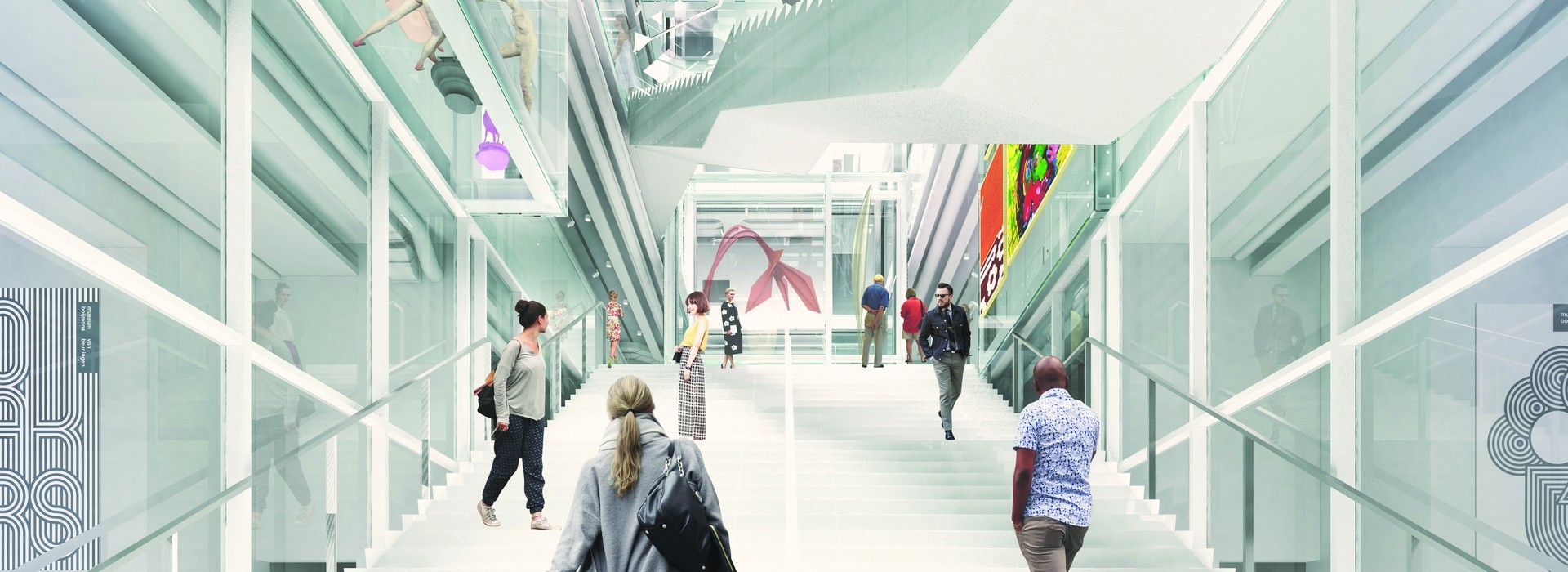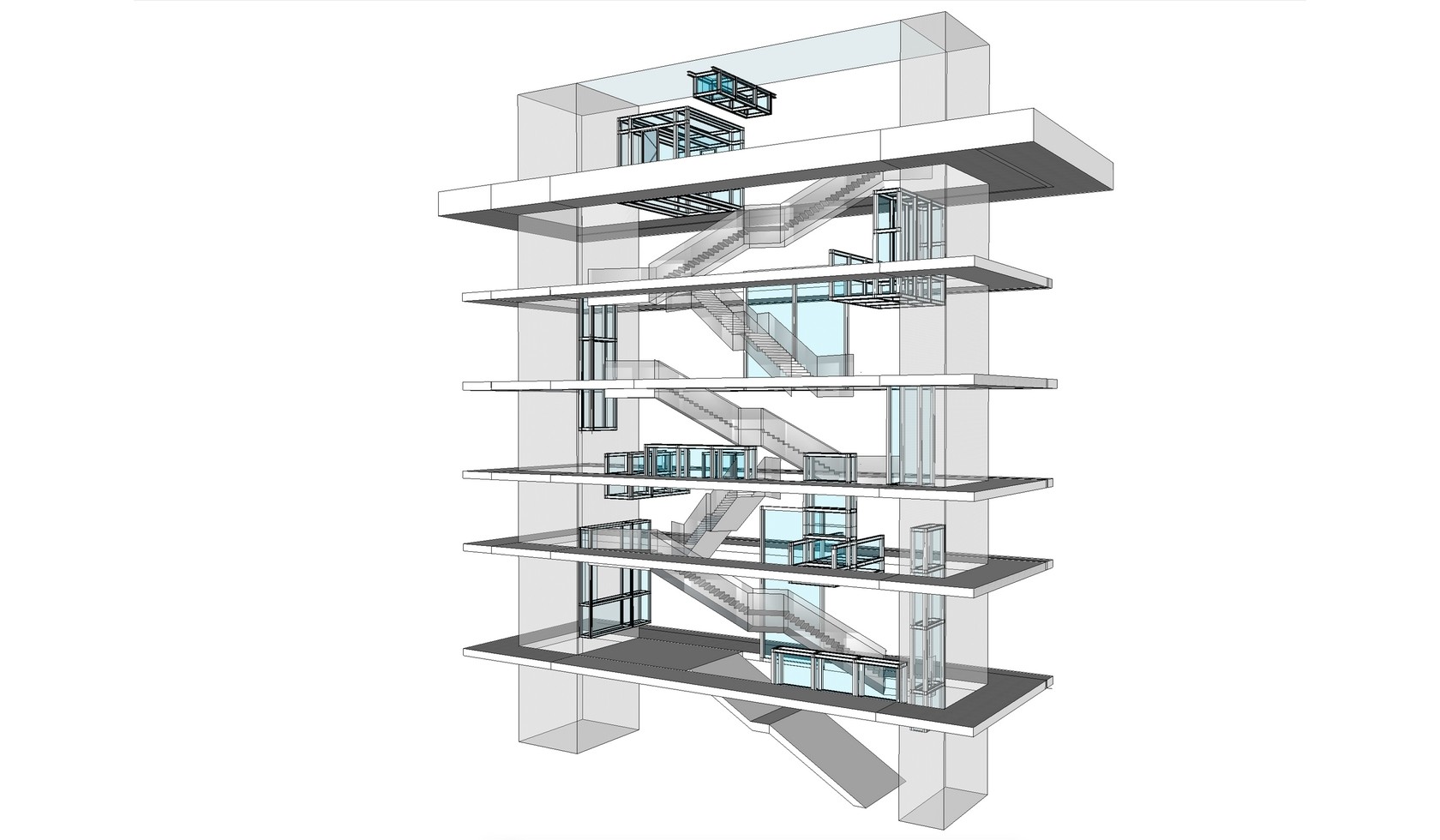


Donors, friends and guests with a privilege pass may book a single or multiple time slots here
Donors, friends and guests with a privilege pass may book a single or multiple time slots here
Would you also like to experience more Boijmans or give a friendship as a gift? Join as a Friend and get invited for the annual Museumpark Vriendendag. Will we see you or your friend in the depot soon?

The Atrium was developed by a team made up of MVRDV, Joost Grootens (graphic designer), Rolf van Gils (materials and technical consultant) and Marieke van Diemen. Marieke van Diemen is an artist who also develops spaces for museums in which she creates environments for staging an exhibition. With her artistic and conceptual outlook, Van Diemen made an important contribution to the design for the Atrium. She explains her vision.
From the outset, it was clear that Depot Boijmans Van Beuningen was not to become an exhibition space, as the museum fulfils that role. The gleaming exterior of the depot will be spectacular and requires a matching response in the heart of the building; the Atrium. This is why we’ve been looking for an unconventional presentation in order to show the huge number of works from the museum’s collection to visitors in an amazing way.


In the middle of the round building there will be a large rectangular open space which will run from the ground floor up to the roof of the building. This central area will be 40 metres high, 28 metres wide and 6 metres deep. In the space there will be zigzag staircases in the style of Giovanni Piranesi, the Italian draughtsman famous for his sketches of imaginary buildings. Two gigantic glass lift shafts will close off the side of the Atrium; one will house the art lift for transporting works of art. The other shaft will be divided to house two lifts; one for paying visitors which will stop at all six floors and an express lift that directly goes to the roof for restaurant visitors and people who want to enjoy the breath-taking view of the city. The roof is freely accessible after 5 pm. We had to come up with an idea for presenting a regularly changing part of the collection between the stairs and the lifts.
As the depot does not have to be an exhibition space, how do you not exhibit? is an important question. In practice, visiting an exhibition usually means following a route planned by a curator or artist that takes you through the exhibition. You might call it ‘directed observation’. A maze will be the exact opposite, as it will have many different undefined and non-hierarchical routes. So I took this as the starting point in my concept and it has been translated into a design with floating display cases and walls for showing works.

The display cases will create a dynamic, lively effect and the space will be used to its full height and width. There will be fourteen enormous display cases in the depot in different shapes and sizes. Visitors will be able walk over the artworks by way of a number of footbridge display cases. All the display cases will be made of glass and toughened steel, like the lifts. It made sense to repeat those materials in the design. The positioning of the display cases will be determined in part by technical and spatial constraints. Starting from these constraints, we looked for an attractive configuration of volumes relative to one another and to the rest of the building. From the gallery, the staircases and the lift, visitors will be able to look at the artworks from all kinds of viewpoints. We did not want to install too many display cases so as to create intriguing views through the display cases to the huge windows that surround the depot. The largest display case, measuring 602 x 506 x 508 cm, will be placed on the sixth floor. The combined volume of the display cases will be roughly 400 m3.
"We want to create an active, dynamic and wondrous environment around the suspended display cases with lifts that go up and down."
Marieke van Diemen
We want to create an active, dynamic and wondrous environment around the suspended display cases with lifts that go up and down and visitors who can wander around a changing selection from the more than 154,000 works in the collection of Museum Boijmans Van Beuningen.
This article has been published before in Depot Journal #1 which is part of a series of six. If you would like to receive all the printed Depot journals by post, please send an email to info@boijmans.nl with your full name and address, reference ‘receive Depot Journals’.